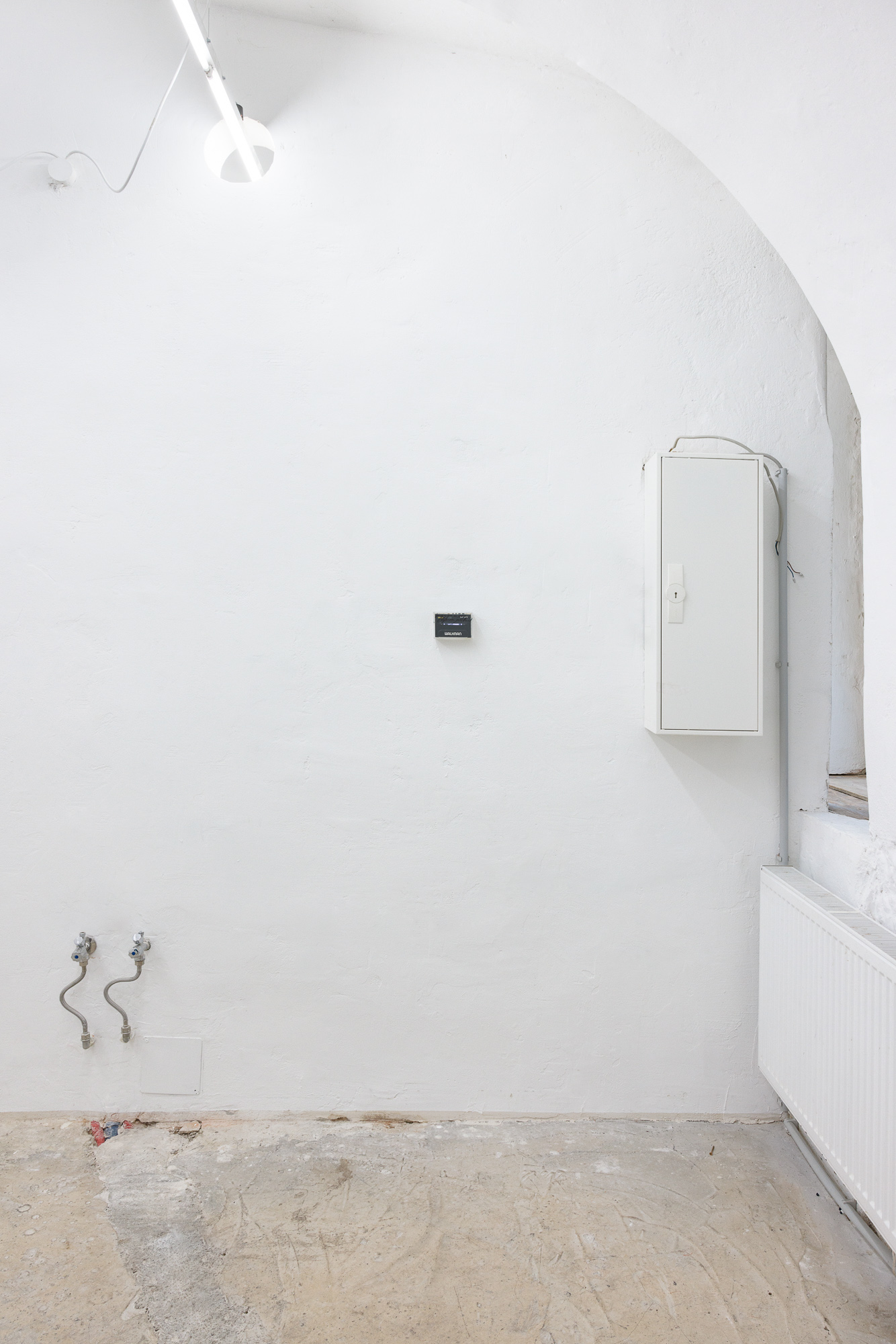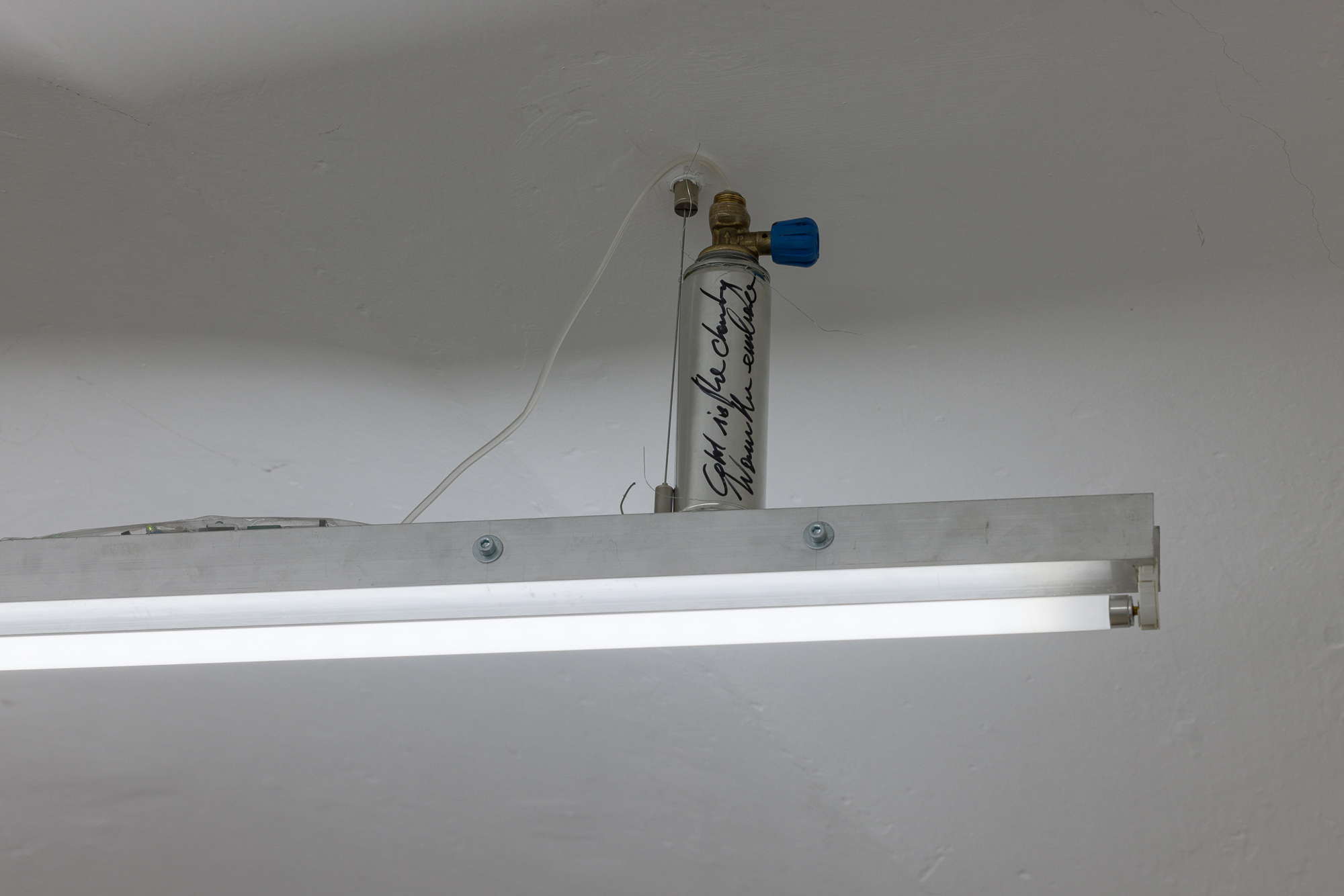Evan Jose / L.M.Oder
Marswetter
17.01. - 07.03.2025
Marswetter
L.M.Oder / Evan Jose
2025
The Nature.
Planets, meteors and all the stone travelers they particularly produce aside from their well known physical gravitation very puzzling gravitations named attractions, but how, if in any ways possible, avoid its permanent condition of living with synonyms for nature’s ability to create such mental or emotional attachments to them?
Sometimes these stony gravitational objects are opening in little steps their doors and then seem to be appearing as spirits even, being named Venus or Mars for instance, related to the adorable qualities of goddesses and gods, leading to devotion and awe really? What is the lure of these submissions, the seduction of these stony companions? why as they are supposed to be cold and hard and without life? In comparison to everything else basically they are thought of being nothing, but what if it is not so? And what if attachments to them are producing a greater truth in cases even leading one to transition desires towards their longtime erosions and their attritions in duress for instance and how about feeling this attachment could lead to exploration of attachment in itself?
Of course, the question I ask myself as I am trying to clarify to myself what is it that I could write down about Mars since I was asked to, more so what is it if I write very honestly down what the thoughts are that immediately come through my mind particularly now today at the beginning of the new secular year containing promises of being even a more rather special year than the last one? Mars although just having been the god of the heathens of long ago regardless being attributed with all these beautiful qualities of a man of a certain difficult even scary time, appearing from nowhere and being rejected at first, but then strangely being longed for, yes very good, but I have one hesitation still about him, he is most pagan, he is an idol even of paganist submission to idols, from that point not too likable today plus I ask is his name still necessary today in the middle of all these new struggles and fights and wars? No, he is not, I should say and if, as I promised it would be most honest about how I feel this year, then I would say first no we don’t need this Mars name but still then secondly I as well should reconsider the gift of such presence at least to be brought down from the skies, the beauty of its force and its energy, even if it is only for this one year could include some longing for the excitement of what the name is standing for, in this case what is deriving from the Mars’ attractions to be welcomed as a new return into the somewhat so Marsless present contemporary feel.
The less planetary martian images in this exhibition now, that follow paintings of Redon and Pissarro are images not only on the 19th century French artists attraction to the geological tectonic planetary life and to such aspect of nature but more so to nature that appears as a beyond and for sure so beyond the social life’s restrictiveness and appear sometimes so more impermeable and attractive. Simultaneously they convey a certain something as if focussing and representing the fascination to the so-called thisness of their works, those landscape paintings here in the exhibition are for now exhibiting attraction itself to the nature of all kinds of gravitations. Exhibiting it means gravities’ nature is to be applied in painting productions’ temporal sphere to, to apply the geological and nature’s Sachlichkeit, cold and detached, in other words almost anti-bourgeois I would like to say. This is the secretish meaning of the excitement about landscape. The trigger for landscape painting often is to make all efforts to represent the transcendence of the view into an unknown, into a visually very known field but more so into an inconceivable vast field of imaginative attachments even in the most stoney pure plains, able to describe a vital longing for discovery and for being generally mentally attached by even an at first mistakingly perceived epistemological emptiness.
But secondly the aesthetically perceived magnetism of planets, meteorites or other celestial objects producing gravitations, they became here and there metaphors for whatever it is to humans souls’ desires and sufferings and whenever being influenced by their many gravitations and consequently impacted by their erosions and attritions, these attachments become similar to the beauty of the attrition of these stones, as their slow and long-lasting and forever with no end to it life make appearance in the always short time limited ontology.
To work with stones is a slow exercise of overcoming the bias that connects simple stones or rocks to poverty, to lifelessness and emptiness at the same time, excluding those paradoxes of stones, as well as they are incredible containers of pain and of happiness and watchful eye from their comparably almost eternal life‘s perspective and containing their secrets of their memories, as often referred to in ancient or pre-medieval literature. There is a new old message again in science even that even stones and planets without biology are living communicative beings with even a communal sense but vastly too slow and long suffering to be understood. That they are living is not a weird medieval theory any more, but it seems to demand to reconsider some idea of nature or considering the acceptance of nature both as an exterior land/time existence but as well epistemologically in interiority even in a Freudian sense if you want, eventually using such new old sense of nature as a tool of liberation of thought and as a possibility for the expansion of the horizon of perception and experience. It should be admitted it is both ways a sphere too big to contain in my thoughts and through admitting this obviously might be reproducing some of nature’s great attractions within one’s own self.
But what is the nowness and thisness of images or paintings of Mars etc? Kind of the original idea of Haecceity although too simply said, originally in medieval theory is that every single thing in the universe, in this case explained as of nature, is different and in fact is meant to be different, that within nature everything and everyone is created in a particular way and that only in modes of science or theory and formal categories and categories of identity even more so are only acceptable tools and tools only but they should not be used in any aspect of real life or in art as they quickly might create for instance unethical communications and uses of language. The term was invented by the theologian Duns Scotus in order to be against the then fashionable demands of the flourishing medieval catholic dogma categories of Thomas of Aquinas in particular. The seduction of Duns Scotus’ affirmation of a radical idea of perception of difference within nature, the idea of Haecceity somehow travelled through the centuries into a theory of fiction, or rather the appearance of fiction within literature, by describing works of art or literature that demand great awareness and effort to relate to realities (rather then to categories for instance) and to only add something to those realities that is within those realities as realness or to as what was called to produce “Thisness” or Haecceity with the obligation to call the representations fictions and declare them as such rather than as representations of concepts or of categories, making artists obedient again to the appearances and the beauty of the particularness of beings and objects in and of the universe.
Haecceity is like a precious stone to be found in art of the gone past, in any case it might appear for instance in these Marswetter exhibitions’ paintings, possibly, like in a sometimes psychedelic moment in the representations of the tectonic geological appearances, or in a sense of fictionality in the reproductions of landscapes of the 19th century.
That way the stony and heavenly companions above are the center of a new old sense of nature, or rather their attractions to them are, and could have in our particular present situation have transitional experiences following them that they could remove repetition and criticality at least strategically from our minds and allow the return of the experience of affirmativness into bored minds alone by experiencing the adorable presence of their physicality but more so one falls into adoration through relating to their spirituality as the goddesses and gods had in their spiritual meaning after some years of the collective abolition of the deepest beauty of natures realities, something here might suggest a return from these mental deserts that come from too long application of theoretical categories.
- Josef Strau


Evan Jose, Green and Blue Planet with Silver Ring, oil on panel, 2024, 119 x 126 cm

Evan Jose, Untitled (Landscape), oil on card, mounted on panel, 2024, 22,5 x 29,5 cm


L. M. Oder, Untitled (Imagine A Song, Live in Your Head, Sony Cassette Player, Feathers, LED-Strip, 9V Lithium Cell, Acrylicglass, Wood, Aluminium, Assembling Hardware, 7,5 x 11,5 x 4 cm

 L. M. Oder, Cold Is the Clarity, Warm The Embrace, 2025, 7 Flames, Feathers on T5 49W/840, Marker on customized Gascartridge with Gallerists Handwriting, Remote Relais, 12V Igniter, 12V Valve, Inverter, customized assembling hardware, customized infusion set, syringes, dimensions variable
L. M. Oder, Cold Is the Clarity, Warm The Embrace, 2025, 7 Flames, Feathers on T5 49W/840, Marker on customized Gascartridge with Gallerists Handwriting, Remote Relais, 12V Igniter, 12V Valve, Inverter, customized assembling hardware, customized infusion set, syringes, dimensions variable
L.M.Oder, Untitled (Plus), 2025, Found Object, 9 Led Diodes, 9V Lithium Cell, Magnets, 3,5 x 5 x 2,5cm



Evan Jose, Syntheitc Iron Oxide (A), oil on panel, 2024, 77 x 77,5 cm

Evan Jose, Crivelli’s Precipice, oil on panel, 2024, 31 x 77 cm

Evan Jose, Syntheitc Iron Oxide (B), oil on panel, 2024, 77 x 77,5 cm



Evan Jose, Fallow Slope (After Pissarro), oil on panel, 2024, 42 x 59,5 cm


Evan Jose, Granular Dispersion (In a Glass Frame), oil on panel, glass frame, 2024, 48 x 54 cm

Evan Jose, Forest Scene, oil on panel, 2024, 75 x 99 cm


 Evan Jose, Mars in Royan (After Redon), oil on card, mounted on panel, 2024, 21 x 29,5 cm
Evan Jose, Mars in Royan (After Redon), oil on card, mounted on panel, 2024, 21 x 29,5 cm
Evan Jose, Tent on Mars, Oil and gold leaf on panel, 2024, 119 x 126 cm




L. M. Oder, Cold Is the Clarity, Warm The Embrace, 2025, 7 Flames, Feathers on T5 49W/840, Marker on customized Gascartridge with Gallerists Handwriting, Remote Relais, 12V Igniter, 12V Valve, Inverter, customized assembling hardware, customized infusion set, syringes, dimensions variable




Evan Jose, Mars Landscape, oil on panel, 2024, 84 x 90

